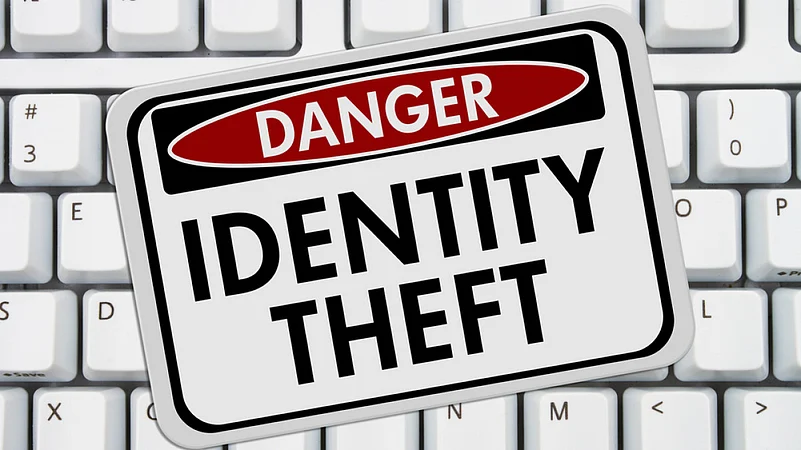Some weeks ago, there were reports of fraudulent usage of people’s PAN cards to obtain loans from a fintech loan app. Many people were shocked to see loans registered against their PAN and some of the loans were not even repaid, which resulted in their credit score being downgraded. Cases of identity theft are on the rise. Can you protect yourself against such miscreants? Yes, and here’s how.
What Is Identity Theft?
In identity theft a person wrongfully impersonates another person’s identity. The identity can be of any type--name, date of birth, bank account number, debit or credit card number, phone number and other such related personal identities. These IDs are stolen mostly for conducting illegal or fraudulent activities. For example, your debit card can be stolen for purchasing goods, your PAN card may be used without your knowledge to obtain loans, and your phone number may be stolen to get access to OTPs.

“Identity theft is a criminal offence of obtaining and wrongfully using another person's personal and financial information to get credit, loans or services. Identity theft can be committed in many ways, and it typically leads to victims being left with considerable damage to their finances, credit and reputation. Therefore, it is essential to protect the information in any growing industry that keeps track of people's credit reports, financial activity and PAN details,” says Bhavin Patel, co-founder and CEO of LenDenClub, a P2P loan platform.
The Most Recent Big Identity Theft
IndiaBulls Group is a diversified real estate and financial services conglomerate. Their fintech loan app ‘Dhani’ was used to obtain loans on the basis of several people’s identity details like PAN without the real owner’s knowledge. One of the consequences of non-payment of the loans was that the victims’ credit score suffered. Dhani Loans and Consumer Services (formerly known as Indiabulls Consumer Finance) said, “We are weighing all complaints to see if it was a case of identity theft and rectifying records in the credit bureaus,” reported Zeenews.
How Not To Fall Prey To Identity Theft
Identity theft is a big issue and 55 million people have fallen prey to it in just 10 countries, as per the 2021 Norton Cyber Security Safety Insights Report. Of these 55 million people, India alone had 27.7 million victims. So, how can you protect yourself?
“You can check if someone has taken a loan in your name using your PAN number by looking at your credit score. Credit bureaus such as CIBIL, Equifax, Experian or CRIF High Mark can provide you with the information of loans in your name. Keep a tab on your financial transactions with the lending institutions you deal with. To find out if someone else has taken a loan on your PAN card, simply enter your personal information, such as your name and date of birth, along with your PAN card number in the credit agency’s website, and the details will be displayed,” says Joginder Rana, vice-chairman and managing director, CASHe, a loan platform.
Keep A Regular Track Of Your Credit Score: You can and must keep track of when and where your PAN is being used. Use various credit bureau websites to check if your PAN was used to obtain a loan or not. If you do not recognize any transaction, immediately report the matter to the cybercrime division of the police.

“In the credit bureau report, there is a separate data point which tells you how many times you have applied for a loan in the last 30, 60 or 90 days. If you have not applied for a loan in these many days and you notice some loan activity, it is a sign that your PAN is being misused,” says Mukesh Bubna, founder and CEO of Monexo Fintech.
- Do Not Store Identity Information Digitally: Do not store pictures of your PAN, Aadhaar card, or any identity card in your phone’s gallery. In the unfortunate event of your phone getting hacked or stolen, your documents will also get stolen and then get misused.
- Use A Non-Readable Wallet: There are several wallets available that can block RFID (Radio Frequency Identification) signals so that a bad actor cannot scan your debit or credit card details. Use that to prevent your card details from falling into their hands.
- Check The Website On Which You Are Transacting: Most modern websites have a SSL (Secure Sockets Layer) certificate. This certificate authenticates the said website's identity and also enables an encrypted connection. You can also check if a website is secure or not simply by looking at its URL. If it starts with ‘https://’ then it is secured with either SSL or other encryption certificates. “The first and foremost precaution to prevent identity theft is to protect your computer and smartphone with strong, up-to-date security software. Use strong passwords and keep changing them regularly with a combination of letters, symbols and numbers. Weak passwords are a cybercriminal’s dream, especially if you have the tendency to use the same password everywhere,” adds Rana.
- Check Your Statements: Credit card companies and other loan companies send monthly statements. Scan the entries in the statement and if you do not recognize any transaction, immediately call their helpline number for clarification. “Many financial institutions will text or email when transactions are made on your accounts. Sign up so that you know when and where your credit cards are used, when there are withdrawals or deposits to financial accounts and more,” adds Rana.














